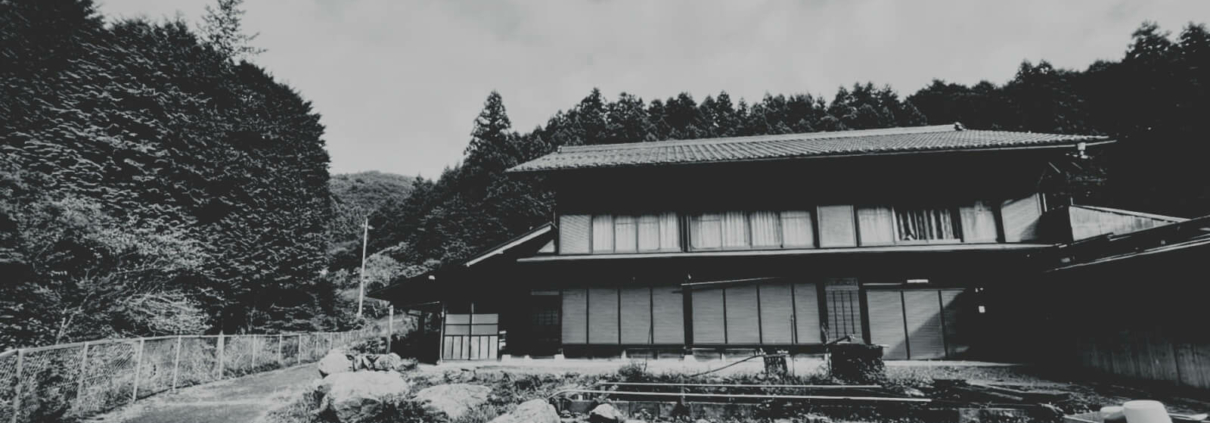Real Estate Realities
It is impossible to tackle the issue of Japan’s rural revitalization without addressing the elephant in the room: depopulation of rural areas and the negative effect on local real estate value.
Over the past 70 years, Japan’s population has concentrated in urban centers, especially Tokyo, Osaka, and Nagoya, as young people continue to leave rural regions to pursue higher education, economic opportunities, and the allure of big city life. As a result, rural Japan is suffering. Dwindling career opportunities, limited access to higher education, and rapidly aging communities all contribute to a vicious cycle of decline. In short, many young people leave and don’t move back. Ever.
Depopulation is a negative spiral. Public services like schools and hospitals become unsustainable due to scarce local funding, adding fuel to the fire of the decline in value of property in rural areas. Abandoned properties – aka akiya – can be found everywhere, even in urban areas, but especially in rural areas, and in ever-increasing numbers. A Japanese government survey in 2018 reported over 8 million akiya in Japan, suggesting that ~12.9% of Japanese property is considered abandoned. The combination of decreasing tax-paying residents and increasing tax-delinquent abandoned properties is a massive challenge for local municipalities, many of which have a balance sheet full of red ink.
How dire is Japan’s rural real estate problem? What are the contributing factors? Are there solutions to rectify the situation? Let’s take a look.
Rural Japan’s Property Dilemma: It’s Bad!
To understand the depth of rural Japan’s property dilemma, one only needs to look at the numbers. Today, the World Bank estimates that 92% of Japan’s population lives in urban areas. Compare that with about 50% in 1945. In less than 80 years, Japan’s urban vs. rural population balance went from half to less than 10%. The impact of this shift is substantial across society and industry.
Agriculture is just one example of an industry affected by Japan’s metro migration, but an important one. As a result of Japan’s younger generations opting for city life, the average age of farmers in Japan was 67.8 years old in 2020. Young people not wanting to tend the fields might not be surprising, but paired with a serious lack of immigration, this trend affects Japan’s ability to feed itself. Japan’s food self-sufficiency ratio currently stands at just 37%. Thus, without a steady flow of imports, Japan is constantly at risk of food shortages, hampering its sustainability and national security efforts.
Unsurprisingly, the allure of the city – promises of white collar work, efficient public transit networks, vibrant nightlife – is an attractive option for younger generations. They’re making a lifestyle choice, and rural regions thus far have failed to produce an attractive counterproposal.
Looking at inheritance, when elderly property owners in rural areas pass away, their heirs often have no real estate inheritance plans in place, so inherited real estate is often left unattended. This leads to another unfortunate reality: if you newly co-own an old home that’s halfway across the country with your relatives who also don’t live nearby, what do you do? Unless the property is of substantial value, in Japan unfortunately the answer tends to be absolutely nothing.
Further compounding the issue is Japanese inheritance law. Properties, abandoned or not, often get passed on through generations regardless of the inheriting party’s interest in receiving the asset. Inheritance tax obligations are partly to blame: There is a 10 month window to pay the totality of inheritance tax of the deceased. Unless the deceased left substantial cash for family members to pay Japan’s inheritance tax, the heirs essentially have to either pay a considerable sum to acquire a house they might not want, sell it, or decline to inherit the estate.
Once nice and livable but now rusted-out or caved in homes are scattered across rural Japan and only growing in number, and oftentimes the government cannot do anything about it due to a lack of resources. The Nomura Research Institute predicts that if current trajectory continues, 30% of Japan’s housing will be derelict by 2038. That is 22 million properties. Can this trend be reversed?
This is the second article of a six-part series on Japan’s Rural Revitalization. Together with each article, we’re also discussing each topic on Japan Unleashed, Parthenon Japan’s new official podcast.
Enticing Young People to Feel Inaka
There might be some light at the end of the tunnel. Young people in search of alternative lifestyles, a slower pace of life, and lower costs of living are starting to move to rural areas, some of whom choose to obtain and renovate abandoned homes. Aided by local government initiatives designed to entice young people with tax and other financial benefits, new and refurbished homes, as well as akiya, are gaining in popularity across Japan. The reality of hybrid or even fully remote work, with many companies having no choice but to offer such incentives in order to retain workers, is contributing to the allure of a non-urban lifestyle.
Still, it is not yet an easy sell. Talent can have a hard time finding suitable work in rural economies, which also means it can be difficult to find skilled local workers. In addition to the challenge of finding gainful employment, young families face additional difficulties in weighing education options for their children. Quality of education in rural public schools can be top notch, but it depends on the area and the school. Often enough educational and other resources are being liquidated rather than added to due to a lack of public funds to maintain infrastructure, which can easily detract from the prospect of a country life.
There are also social factors at play. The reality is that some communities are more welcoming than others to newcomers, whether Japanese or foreign. A mindset change among rural communities that embraces newcomers and integrates them into the community is key to bucking this trend.
The Role of Government
Government policy is impacting the overall picture in both positive and negative ways. The central government provides schemes that pay families to move with child tax credits, such as one approved by the Tokyo Metropolitan Assembly in 2022 which offers families ¥1,000,000 per child to move outside of the Greater Tokyo Area (including Saitama, Chiba, and Kanagawa Prefectures). Unfortunately, this is not a very enticing amount when compared to the price of a cheap-but-livable akiya, much less a new property to call home in a rural area. And even if the program does hit its target of 10,000 people by 2027, metro Tokyo’s population would decline by just 0.03%. Not exactly an earth-shattering potential development. However, a snowball starts with a single flake.
Such efforts are mildly interesting, but they have a long history of missing their targets. If the government wishes to meaningfully entice Tokyoites and other urban dwellers to relocate to rural areas, they must get more creative.
Rural communities within easy reach of major urban areas have an advantage over more isolated ones, but luring newcomers requires incentives, jobs, infrastructure, and sustainable communities. This is a complex problem that can be solved, but it will require more attractive incentives that will only come about as the result of critical thinking, not just handouts.
While many see this as a national and local government problem, public-private partnerships could provide better solutions. Coordinated efforts providing paid opportunities to work in rural areas would likely have a dramatic long-term impact. Large Japanese corporations, which employ tens of thousands of workers, need to step up to the plate. To date, few have done so in a meaningful way.
Salt on the wound: Condominium values rise while detached houses depreciate
Another pressing issue is value disparity. In addition to urban vs. rural pricing differences, condominiums have shown consistent price appreciation in comparison with detached homes in many areas. As you would expect, condominiums tend to be built in urban areas. There are several reasons for Japan’s condo boom:
- Tax Incentives: In Japan, land assessment separates land from the dwelling, with the actual taxes paid noticeably less for high rise condominiums and their owners than single family homes. Additionally, assessed values tend to be lower than market values, leading to increased ownership for investment purposes. On top of it all, current inheritance tax laws favor condominium ownership.
- Investment Returns: The condominium market is collectively more stable as compared to the detached home market, as recent Japanese consumer preference sways towards the implied safety and security advantages reinforced by aggressive sales and marketing campaigns. Also, because condominiums are more easily rentable than detached houses, overall return on investment is historically much higher.
- Supply vs. Demand: Nationwide, the number of new condominium units available has steadily advanced as price appreciation continues. As major developers control supply and their market share grows, prices remain elevated. There are also efforts by home builders to create build-to-sell homes, usually in the form of micro planned developments, but the average price is often higher than condos and resale value is a worry even in urban areas, but even more so in rural areas.
- Low interest rates: As long as the Bank of Japan keeps its current stance of monetary easing, banks can continue to offer staggeringly low interest rates to mortgage-seekers, often below 1%. However, with such low interest rates, banks are happy to give mortgages to people buying centrally-located brand new condos, but rural real estate is at the exact opposite end of the spectrum. Getting a mortgage to buy a rural home, especially an older home, is difficult if not impossible because of the low bank valuation.
The solution? Technology, foreigners, and investment could be key
The challenges are vast, but technology is helping. Japanese companies are slowly beginning to accept remote work, e-commerce, and delivery companies, and new last-mile delivery solutions are making rural life more convenient. There are also non-profit organizations in some communities that help to link urban and rural areas with a variety of new services.
With all of these cheap, empty houses, non-Japanese buyers living in Japan as well as overseas investors are starting to take notice. Can foreigners affect rural migration? The cheap yen, few legal restrictions, comparatively low inflation, and no residency requirements to own property in Japan may soon give us an answer.
However, buying property in Japan isn’t the simplest of matters. Proceedings tend to be convoluted, require language ability, and a working knowledge of Japanese real estate to avoid getting a bad deal. In 2020, Parthenon Japan started a consultancy, Akiya & Inaka, that lessens these hurdles to investing in Japanese property. By zooming out to see the big picture of property purchases in Japan, we learned that the determining factors in a sale really come down to lifestyle objectives and the ability to critically assess the situation. This goes double for non-Japanese buyers. In fact, some Japanese owners of “non-standard” properties actually seek out non-Japanese buyers for this quality.
This is not the case for everyone, though. Nationalism or even overt racism can be a factor. Often enough, these tales, however true, tend towards the ridiculous, such as the case where large parcels of land with underground water rights were sold to foreign buyers, and the public dissent ensued over fears of Japan’s resources being bottled and shipped overseas. Even so, it takes a seller to find a buyer, and if Japanese do not want to lose precious resources, they may not want to put them on the market in the first place. Some families have a desire to keep their historical homestead, but with few resources to assist, these homes often fall into disrepair as they stay empty and underutilized, and traditional family gatherings are in steep decline.
Rural real estate: Japan’s biggest problem and opportunity, at the same time
Japan’s abandoned property issue is complex, but one thing is certain: even with policy initiatives, Japan’s population is expected to shrink to 75 million by 2100, 53 million (58%) less than Japan’s peak population in 2010 of 128 million. Think about that for a minute. Who is going to live in all of these houses?
Many argue that one key piece of the solution is to expand immigration, an obvious possible solution that many countries have implemented to avoid depopulation. While immigration is growing, Japan has only 2.8 million foreign residents as of 2021, around 2% of the domestic population. Will the Japanese government drastically shift its stance and embrace mass immigration, the only kind that would have a substantial impact? History and politics suggest that the government’s desire to open Japan to immigrants is simply not there for a whole host of reasons, which will be discussed in an upcoming article in this series.
The negative impact of population decline on real estate value is not an issue to be taken lightly. If homeowners suspect housing prices in rural areas will continue to decline due to further population decreases, some may sell now in anticipation of lower prices in the future. This will directly impact already weak regional bank balance sheets filled with super-low interest home loans at risk of default. Add to that the plethora of struggling local businesses, many of which could end up in arrears to local banks, and you get a bleak projection for the future.
In order to make the move to rural areas easier, affordable housing programs and stronger support networks must be developed if young people are to make the leap. On a larger scale, dis-incentivizing over-investment in real estate, and additional policy and tax efforts to incentivize the purchase of vacant homes are logical steps that the government should consider.
There is an ongoing effort to consolidate municipalities into larger, more effectively operated regional hubs, but progress is slow due to local concerns, competing interests, and the immense power of the central government vs. rural prefectures.
Japan suffers from a dilemma many other nations would love: an abundance of affordable housing. For Japan, however, it has become a serious issue with no clear-cut solution. Getting more people back into the Japanese countryside has many advantages, but convincing them to do it is easier said than done.
Words: Parker J. Allen and David Wagner
Parker J. Allen is President & CEO of Parthenon Japan. David Wagner is Parthenon Japan’s Senior Advisor overseeing the media training and crisis communications practices.

 Parthenon Japan
Parthenon Japan
 Parthenon Japan
Parthenon Japan


